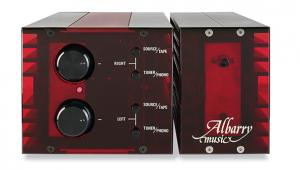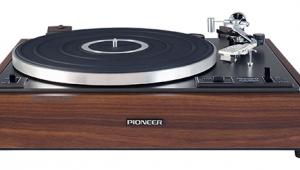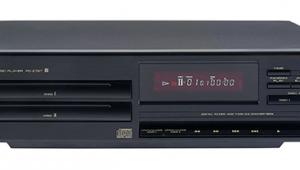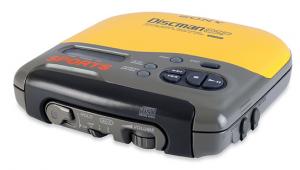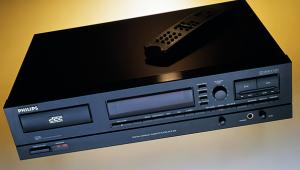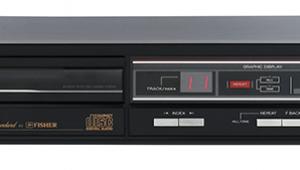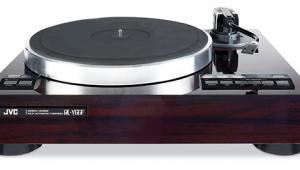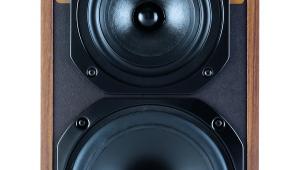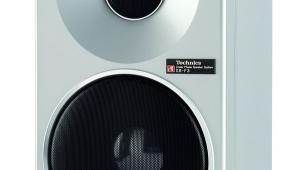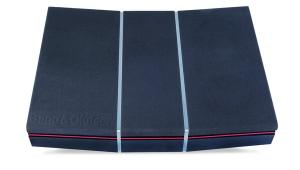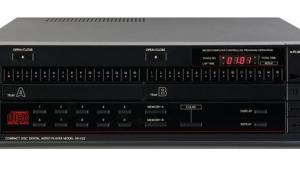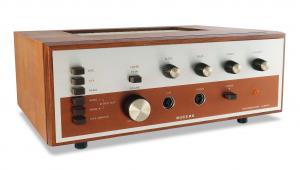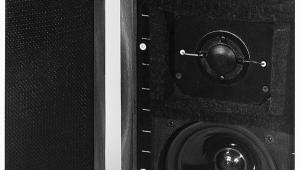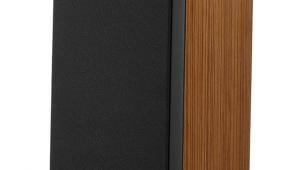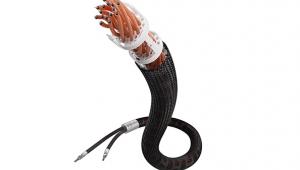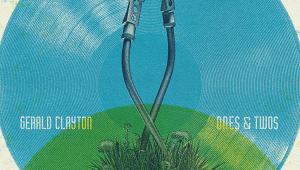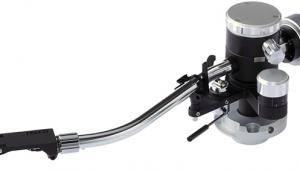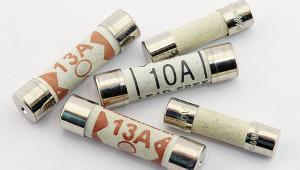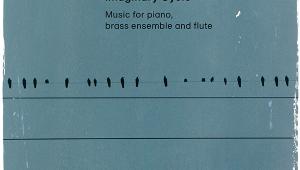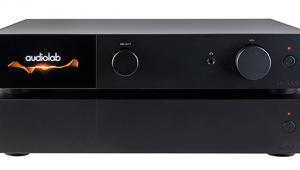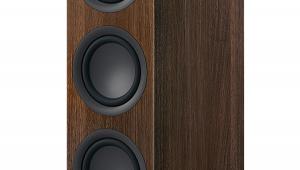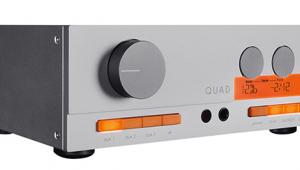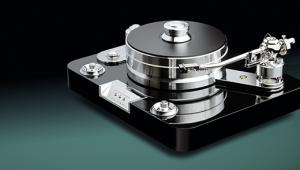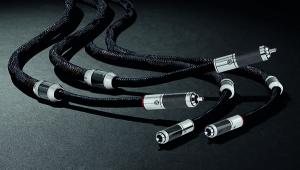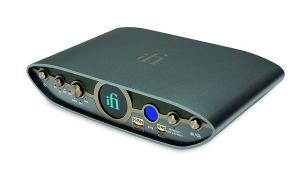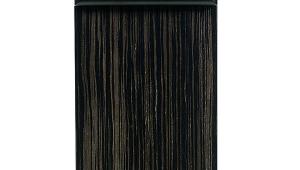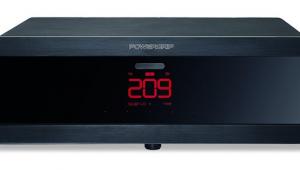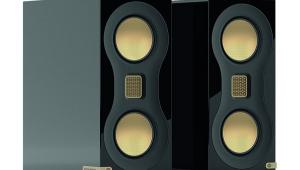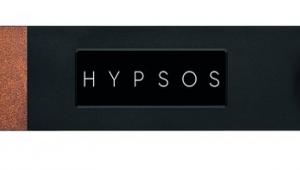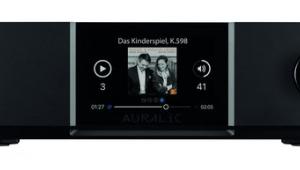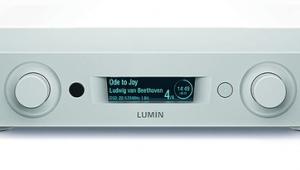Braun PS 450 turntable
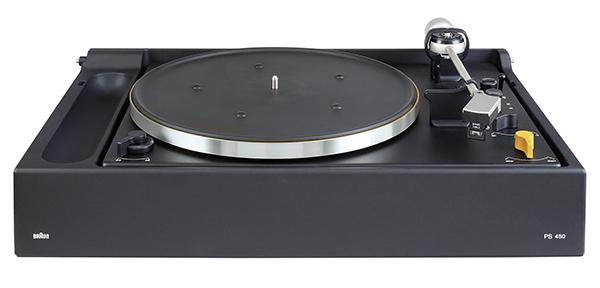

Illustrative of a ‘new wave’ in both the mechanical design and ergonomics of early-1970s turntables, Braun’s fully automatic PS 450 was an idler-drive of some distinction
Braun’s hi-fi activities are little known in the UK, although the company’s Regie 510 and Regie 350 receivers have been featured in previous Vintage Reviews [HFN Jun ’16 & Apr ’17]. At its peak, the Braun hi-fi range was as broad and as sophisticated as that of any rival manufacturer, in addition to the kitchen, personal care and photographic equipment that the company also produced. Unlike some, Braun designed and manufactured its own turntables and these were engineered to the very highest of standards. By the mid 1960s the range comprised five models, including one that came factory fitted with an SME 3009 arm and a Shure V15 cartridge.
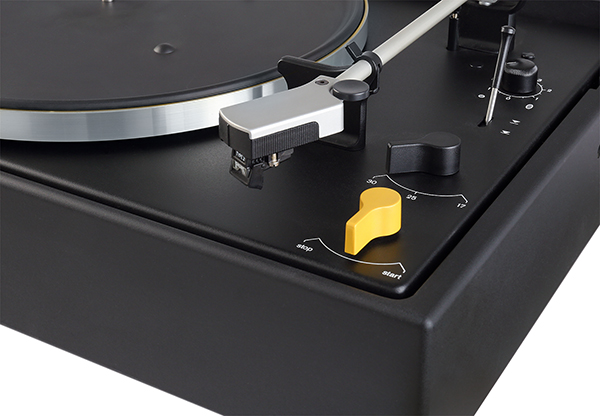
Automatic for the people
As hi-fi became more of a mass-market interest in the 1970s, the Frankfurt-based company simplified its offering. The last remaining model derived from the old ranges was the PS 500, a sophisticated integrated turntable with an oil-damped sub-chassis. The PS 500 was an excellent performer but was expensive and lacked the automatic functions that many buyers now demanded. This problem was addressed by Braun in 1973 with a new design which found its way into a whole series of related models. These included the PS 350 and PS 450 in the black ‘Studio’ series, the PS 358 and PS 458 in the stylish white 8o range (named after the slight angled slope of their fascias) and the combination units Audio 308 (also an 8o model), Audio 400 and Audio 400S. There were two versions including a semi-automatic mechanism that had to be cued manually, though the arm would lift and return at the end of the record. This was used in the PS 350 and PS 358, but the PS 450 seen here used the fully automatic system, easily identifiable by a three-position size selector behind the yellow lever at the front.
System upgrade
Up until this point the majority of Braun turntables had featured a suspended sub-chassis and a drive system that combined both an idler and a belt. The idler was driven from the motor spindle, the latter being stepped to provide the choice of up to four speeds. The idler then drove a second pulley that serviced the main belt-drive around the platter. The PS 450 was more evolved. Firstly, it was entirely constructed around a rigid pressed-steel top plate that was isolated from its surroundings by springs onto a cast resin plinth. Moreover, the drive system was entirely reconfigured. The motor was now a low speed (500rpm) synchronous type, similar to the ones found in many belt-drive designs of the time. It drove the stepped pulley/capstan via a short square-section belt and from this the platter was rotated via a small rubber idler wheel. A similar (if bulkier) arrangement was used in Thorens’ TD124 [HFN May ’10]. In Braun’s PS 450, transposing the positions of the belt and the idler allowed for improved isolation of the motor which itself was mounted between two compliant coil springs. These were wound in opposing directions to restrain the motor’s torque, although a further tension spring was also needed to balance it perfectly. The PS 450’s stepped pulley was mounted on a shaft attached rigidly to the deck which resulted in a perfect interface with the rubber idler (which now did not have to be designed to block noise from the motor).
Going straight
Previous Braun turntables had been fitted with a J-shaped tonearm but the arms of the PS 450 and its derivatives featured a straight aluminium tube. The headshell used a slide-in carrier for the cartridge which could accept all standard types with a 0.5in mount. The debut fitting was a Shure M75 MG [mk2 pictured here] but later examples came with an M95 moving-magnet instead. Once balanced, a dial on top of the arm pivot set the downforce. The finger lift was of a novel design too, the PS 450’s arm having a circular tab behind the headshell, complete with Braun’s signature recess to allow it to be easily gripped by a fingertip.

The platter was 292mm in diameter and weighed 2.3kg. It was pressure die-cast in Germany by Hella (a firm better known for its headlights for cars) and individually dynamically balanced after the initial machining process. The driving surfaces were then coated with high-friction paint to improve the traction of the idler. As was the fashion at the time, Braun attempted to isolate the record from the platter as much as was possible, supporting a 12in LP on a raised ring around the mat’s edge only. For singles, the mat had five raised bumps closer to the centre.
Other refinements of the PS 450 design included a pitch control and a tapped hole at the rear of the top plate to allow a Dust Bug to be accurately and securely fitted. Styling required the PS 450 to be 502mm wide and 100mm high (excluding the lid) so that it matched the dimensions of the receivers in the Braun Studio series. This meant that the plinth ended up being substantially wider than the top plate of the deck, so the surplus space was used to provide a shallow recess on the lefthand side to store the previously mentioned Dust Bug or a Cecil Watts Disc Preener, neither of which were offered as part of Braun’s accessory programme.
Fan favourite
This was a successful series of turntables and many were sold in Braun’s native Germany. Models using the unit were still in production in 1978, although the PS 450 had by this stage been replaced in the lineup by the direct-drive PDS 550. Styled in Braun’s in-house studio by Robert Oberheim and Dieter Rams, the PS 450 is, on the whole, an attractive-looking piece of equipment. The exception to this is the dust cover, which overhangs the plinth on both sides so that it looks like one borrowed from a larger model. It’s also excessively curved at its corners, clashing with the rest of the unit which is square shouldered. Coming from the company that invented the transparent turntable lid (for the SK 4 table radiogram of 1956) it is a poor effort. Fear not though, because the clever design of the hinges means that the dust cover is easily removed.
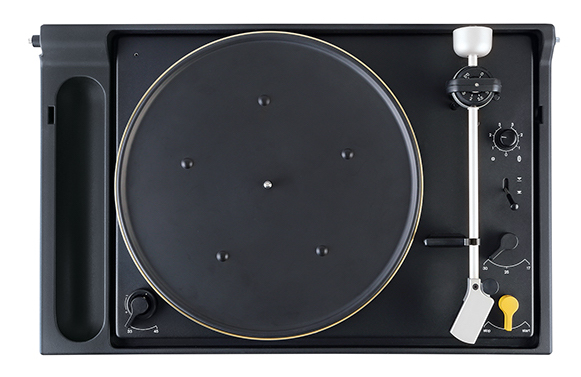
‘Action yellow’
The rest of the machine is a delight. A turntable is a functional object and most of its components look the way they do because of the task they perform. Rams’ philosophy of ‘minimum design’ is perfectly illustrated here – there are no gaudy decorations or superfluous features to be found on the PS 450 but it still gives the impression that every form and surface has been carefully considered. And ergonomically the design is a triumph, aside from the pitch control having no strobe ring or centre detent.
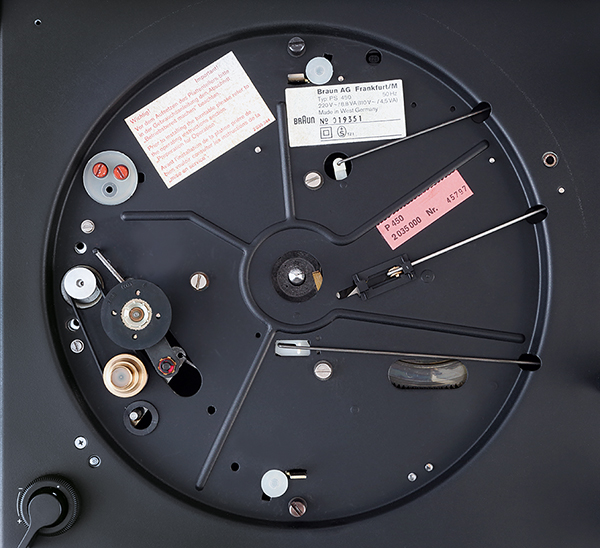
The controls look a bit big and toy-like to begin with but they are perfectly scaled for easy, accurate operation. The PS 450 can be used automatically or manually; for the latter all one has to do is to pick up the arm and place it on the record, the motor starting as soon as it clears the rest. Automatic operation starts by unhooking the arm from the rest, then gently pushing the lever (finished in Braun’s signature ‘action yellow’, the same shade of yellow as the second hand of millions of Braun alarm clocks) over to ‘start’. Size and speed selection are manual.
The way the arm moves and the soft ticks and clicks that accompany it are identical to those made by Dual turntables of the era like the 1229 and this, along with some of the materials and constructional methods used underneath, suggest that although the PS 450 is a unique Braun design it was likely produced in one of Dual’s factories.
![]() Tim listens
Tim listens
In listening terms first impressions are encouraging. I think this is the quietest idler-driven turntable I have ever used, with the whole drive train being essentially silent. The turntable bearing is excellent too; it takes over a minute and a half for the platter to completely stop rotating after the drive has been disengaged. Sound quality is dominated by which of the two cartridge options is fitted, the M95 sounding bright and lively and the M75 being a bit more subdued. In both cases it is the sense of clarity that the PS 450 gives which impressed me the most.
Much like the styling of the machine itself, the performance is uncluttered and clean with every voice and instrument easily accessible for scrutiny. Background noise is impressively low with no motor-induced hum or bearing rumble audible from the listening position. The M95 cart (with its extended treble range) makes surface noise from less than perfect pressings quite prominent, however.
My main criticism of the PS 450 is that it seems sensitive to vibrations in the room. Obvious thickening and blurring of the bass can happen if records are played at high volumes. This is the case both with and without the lid in place, so for best performance careful positioning of the turntable is required [see PM's Lab Report]. Using an amplifier with the IEC roll-off, around 20Hz, built into the RIAA curve helps a lot. In older integrated/control amp designs the same effect is realised by engaging the high pass/rumble filter.
Strauss’s ‘Accelerations’ [op. 234, Deutsche Grammophon 2741 003] showed the PS 450 turntable at its best. The motor’s quiet background, combined with the arm’s ability to recreate the power and scale of the Berlin Philharmonic, made for an immersive musical experience that satisfied all the important criteria. The M95 cartridge gave the music some real bite but at the cost of making the strings a little hard-edged. The width and depth of the stereo image was generous though, creating the impression of plenty of space in and around the orchestra.
Studio recorded material sounded clean and well ordered on Braun’s deck. Black’s ‘You’re A Big Girl Now’, from the album Comedy [A&M AMA 5222], was fluid and CD-like in its neutrality and absence of colourations as long as the subsonic filter was in circuit – without it the PS 450’s bass could become ponderous. This point aside, one would have to go fairly deep into specialist audiophile territory to usefully better it. Overall, this little-known turntable (in the UK at least) gave a fine set of results for a mid-range model and offers an interesting alternative to the likes of Bang & Olufsen for design-conscious music lovers.
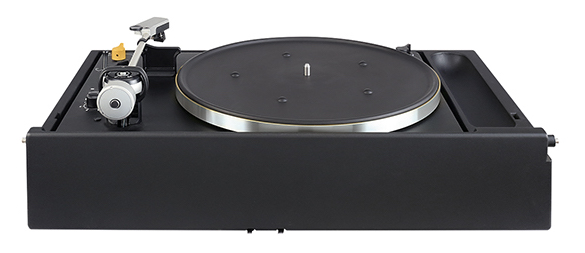
Buying secondhand
Although there are some around, the PS 450 remains unusual in the UK. Therefore, those interested in owning one are best off starting their search in Germany where clean and well-preserved examples are still relatively plentiful.
The weakest part of the design is the Swiss-made motor which has at its core a tubular magnet fitted onto a plastic bobbin. Over time the flanges of the bobbin can break off and leave the magnet free to rattle around in the strong fields inside the stator – the noise is quite unmistakable! With care the motor can be dismantled and the magnet glued back into place. The PS 450’s other main issue is a small rubber peg in the automatic mechanism for the arm which moves it in the automatic modes. As with many Dual turntables that use an identical part, the rubber peg degrades with age, meaning that the arm won’t move by itself. The same parts can be used to resolve the problem but it is best to inspect the various cams, pivots and levers for dried up lubricant at the same time.
If you are importing one of these turntables it is wise to check the setting of the voltage selector which works by reversing the motor plug in its socket. An indicator at the 12 o’clock position in the turntable well shows the setting (220V or 110V) without having to dismantle the machine. Finally, don’t buy a PS 450 with the cartridge carrier missing as the chances of finding a replacement are minimal.
Hi-Fi News Verdict
Braun’s turntables aren’t a familiar part of the hi-fi scene outside Germany but they are worthy of serious consideration in terms of both design and sound quality. If you can’t quite stretch to the manufacturer’s more ‘exotic’ models, such as the PCS 52-E and the PS 500, the easy-to-use and easy-to-live-with PS 450 is well worth seeking out. If only Braun had made a better job of that oversized lid!
Sound Quality: 84%
